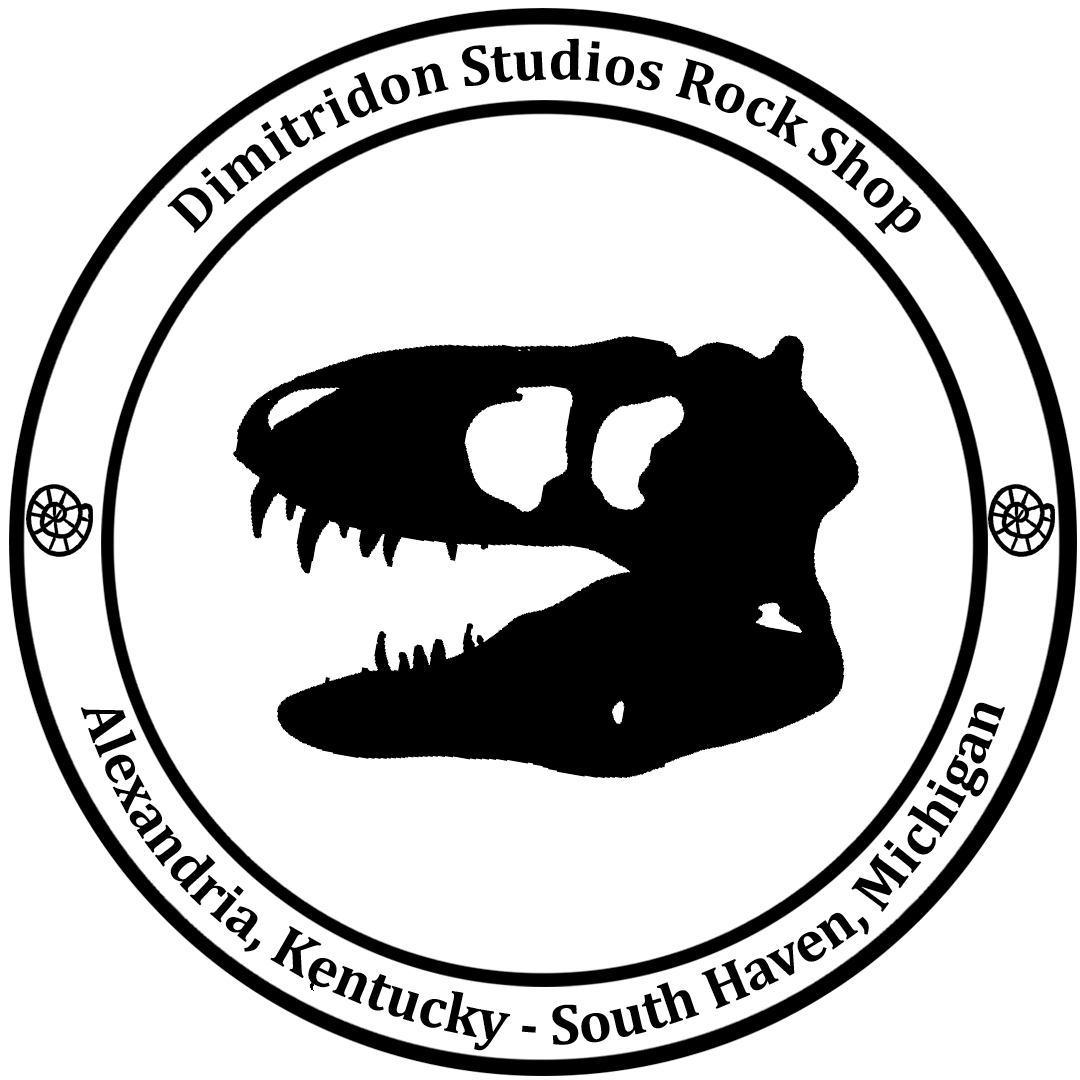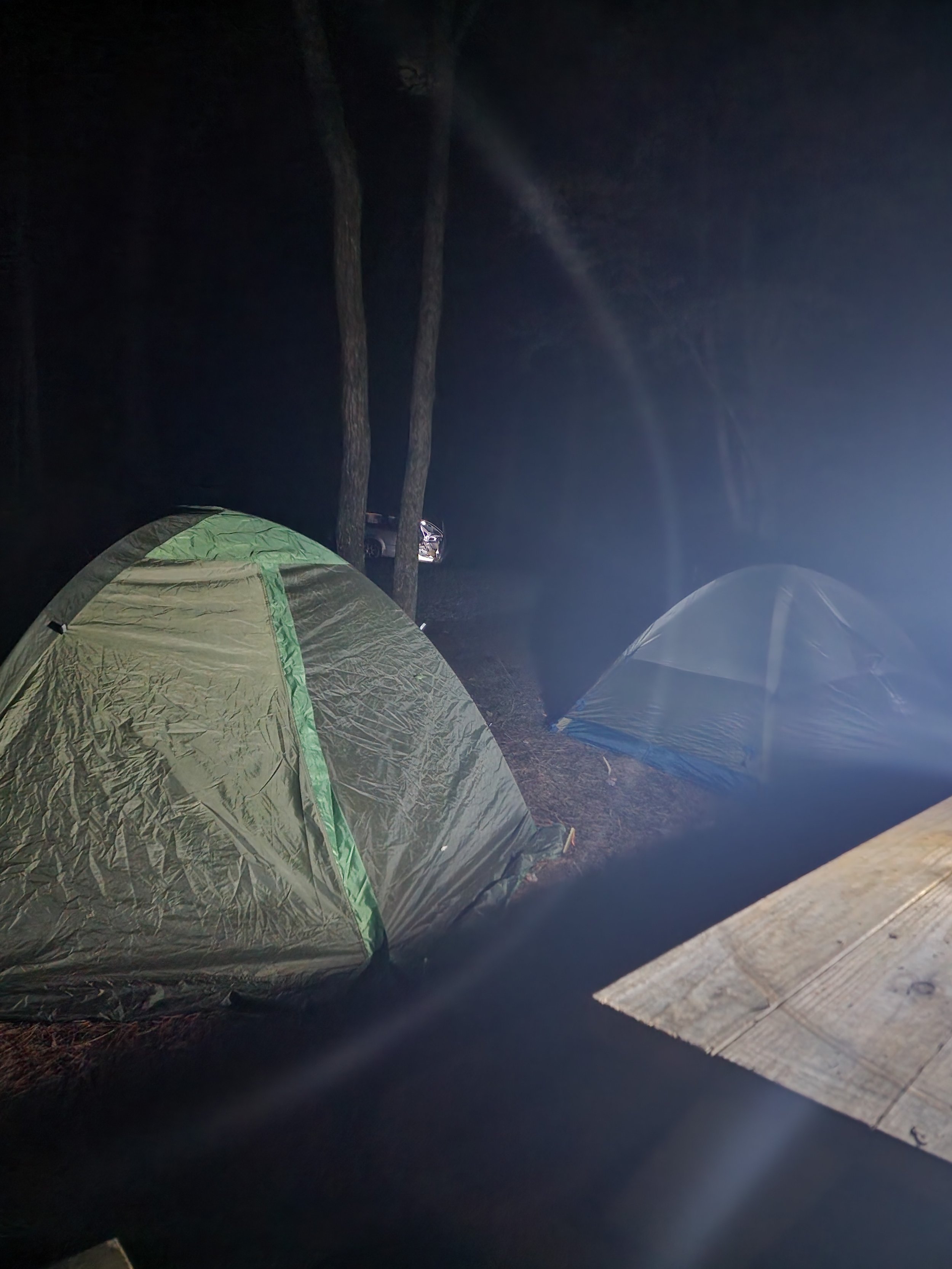
Georgia and South Carolina
The second Dimitridon Studios sponsored trip brought the crew to the south east of the United States. The main destination of the trip is Grave’s Mountain in Georgia. This locality has been famous for a while. It became well known for beautiful combination pieces of rainbow hematite and large rutile crystals, or stunning pieces of quartz coated in hematite.
Grave’s Mountain was an underwater volcano. Large volumes of water were heated to high temperature, passing through the tubes of the volcano and creating unique growth environments. Over seven generations of growth can be found in certain areas of the mountain. This high pressure, high heat, and complex chemistry created large veins and pockets of quartz, kyanite, rutile, hematite, and lazurite.
The second location the team visited was Diamond Hill Mine in South Carolina. Diamond Hill Mine is a public access quartz, garnet, and aquamarine locality where you can dig through tailings, or to attempt to chase veins or pockets of their own almost anywhere on the property. The ground is a mix between decomposed granite and clay with some larger pegmatite pockets containing aquamarine, quartz, amethyst, and black tourmaline.
The journey started in Kalamazoo, Michigan loading up our van to the brim with tents, tools, buckets, and packing material for the samples we hoped to collect. After a 14-hr drive across 8 different states, we found a campground that was still under construction that was only 15 minutes from Graves Mountain. The campground property heads a beautiful river that had not been collected from previously. There were small chunks of quartz lining both banks of the river, which had a few gravel bars and mostly fine grained sand for the bed. The weather became quite rainy after our second day, making the river less safe to explore.
The first successful dig of the trip was in South Carolina at the Diamond Hill Mine. The first day at this location the team tried digging in different areas. To the north of the area we found skeletal quartz, to the east was low quality aquamarine, and to the west was amethyst. The mine had various types of coating for the quartz such as magnesium oxide, limonite, and hematite. Each member had mild success finding a few small pieces.
The next day we decided to focus our efforts together on digging a large hole on the back side of the smoky hill facing towards the amethyst pit. Digging in at an angle helped uncover more dirt. We used a team method: one person in the hole filling buckets, two people checking tailings leading to a highly efficient dig team. In two days the team moved over 21 yards digging a hole that was 12.5 ft x 9 ft x 4 ft deep. The geology of the area was highly stratified. Large sand beds with mixed clasts were present for the first foot and a half of depth, quickly transitioning to a thin clay layer followed by a foot of kaolinite and small clasts. In this layer, multiple skeletal quartz plates were found with multiple coatings. Some of the quartz clusters measured over 6 inches. Beyond the large kaolinite layer was a much thicker layer of darker red clay containing clasts of mixed sizes. This layer contained multiple pieces of floater amethyst over an inch in size. The second red clay layer varied in thickness throughout the hole ranging between 0.5 and 1.5 feet. Under the red clay layer was a second layer of mixed kaolinite. The hole in total produced well over 200 pieces of quartz and amethyst.
To get access to Graves Mountain, an advanced appointment is required. The mountain has two pits. The main pit is to the south west, and is significantly larger than the northern pit. The south pit contains quartz, lazurite, rutile, and hematite. The walls of this pit are steep and very loose. When digging in this area, the team had to be very careful of falling rocks and always aware of each others’ positions. Decomposed granite and quartz boulders could very easily be knocked loose from the wall, exposing large amounts of fresh face. The team did not spend much time in the main pit; many of the large near surface deposits had been dug out. The main rutile area had been fenced off and was not accessible.
The second pit had two levels with roads running on both levels providing easy access to areas higher on the walls. The walls here were significantly less steep but still quite loose. Granite and gneiss pebbles, gravels, and small stones made up the majority of the walls for the first few inches of depth. Under the overburden were large hard faces of the same decomposed granite and quartz. Kaolinite and red clay veins and layers can be seen running between the larger stones. Unlike previous digs, chasing the red clay here did not yield larger crystals.
Along the south wall of the second pit were two approximately 6 foot tall holes into the wall. Climbing inside revealed a highly mineralized area of quartz, red/yellow clay, and hematite. After removing some of the clay, large crystal points become exposed, some up to 8 inches in length. After some mild cleaning, black and rainbow hematite were brought to light. Many of the samples were recovered with minimal damage. Additionally, small pieces of hematite stalagmite and stalactite were recovered from this hole. In total, approximately 65 pieces of quartz and hematite of various sizes were collected. The geology of this area was difficult to identify; multiple highly metamorphosed layers of quartz and decomposed granite folded into each other. The folded mess was covered in hematite, clay, and was decomposing, making the prospect even more difficult.
In the end, the trip was a unique experience that led the team to finding many fantastic pieces. The experience gained will help in future digs. Working with new techniques and new people allowed the team to use new collecting strategies. The team collected well over 300 samples of various quality from multiple locations. All that was left was to do was pack up camp, drive home, and clean some samples.











